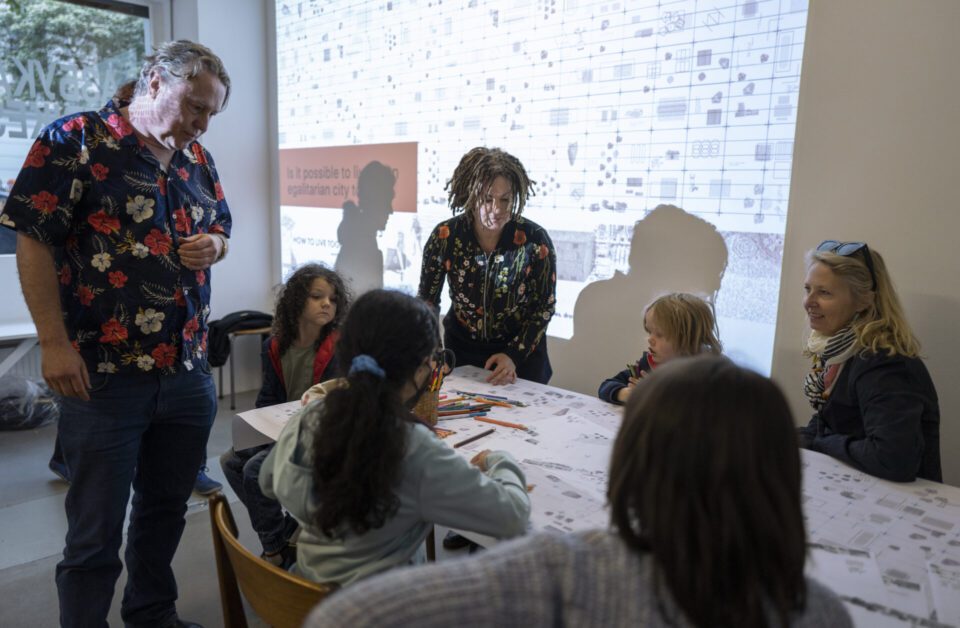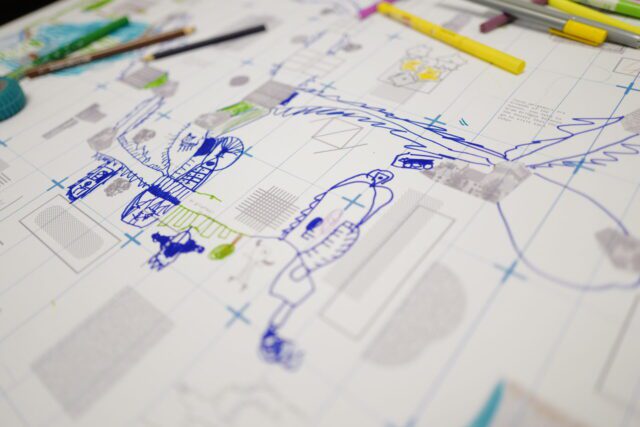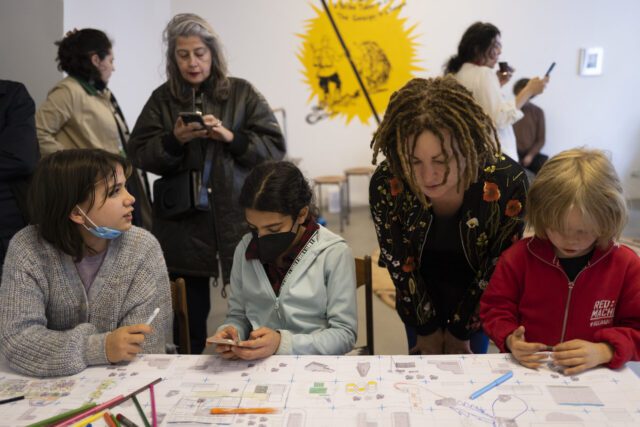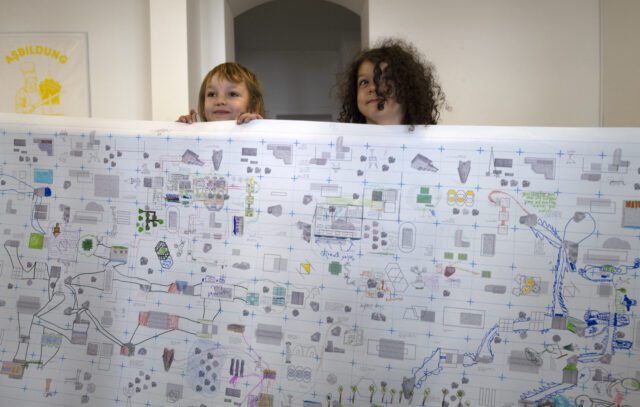
HOW TO LIVE TOGETHER?
Future City workshop description

Introduction:
Participants gather around a large table where a “table cloth” is placed – the beginning of a map of the future city printed on a large sheet of paper, to be drawn all together during the workshop.

Cards:
Participants choose a card with one of the suggested themes: carnival, city gardens, playgrounds, schools and places of learning, libraries, cafes and restaurants, and so on.
The cards have questions and suggestions, as well as a free space to write or draw by themselves.

Storytelling and independent work:
The facilitator talks about what different cities can look like in different cultures and at different times, and how differently people can arrange life in them.
Showing pictures, reading texts from a book of Future city or any other text.
The facilitator can ask questions, start a dialogue with the participants, and answer questions.
Listening to the facilitator, the kids each draw on their own cards.
Altogether, the beginning of the assembly:
The facilitator talks to the children about what an Assembly is and how decisions can be made together by listening to each other. What consensus is? What happens if someone doesn’t agree with the collective opinion?
Do children talk to the facilitator about what kind of city would they like to build (draw)?
They show their cards and share what they have drawn while the facilitator was talking about the history of the cities.
Collective work:
Children are seated around a table with a tablecloth placed on it. The children can go around the table and change seats if they want.
Everyone starts drawing the city from the place where they are, implementing the ideas that come up during their independent work.
Gradually, the individual projects overlap on the map with others. Children will need to agree with each other. The facilitator helps them in this.
If disputes arise, it is necessary to try to solve them together.
Previews and breaks:
During the work it is better to break every 10-15 minutes to discuss and to see where the overall plan of the city is going (if it works out).
It is possible to form a group of children to write the city rules on a separate sheet of paper (if the participants decide the City should have rules).
End of work:
At the end of the workshop, the facilitator shows the final map to the children and discusses the result with them.
The children can arrange an exhibition of the collective map and the individual cards they have made.
It is crucial to hear everyone’s opinion: does everybody agree with what has been created? Is this how they imagined the final result and what they would like to change in the future?
